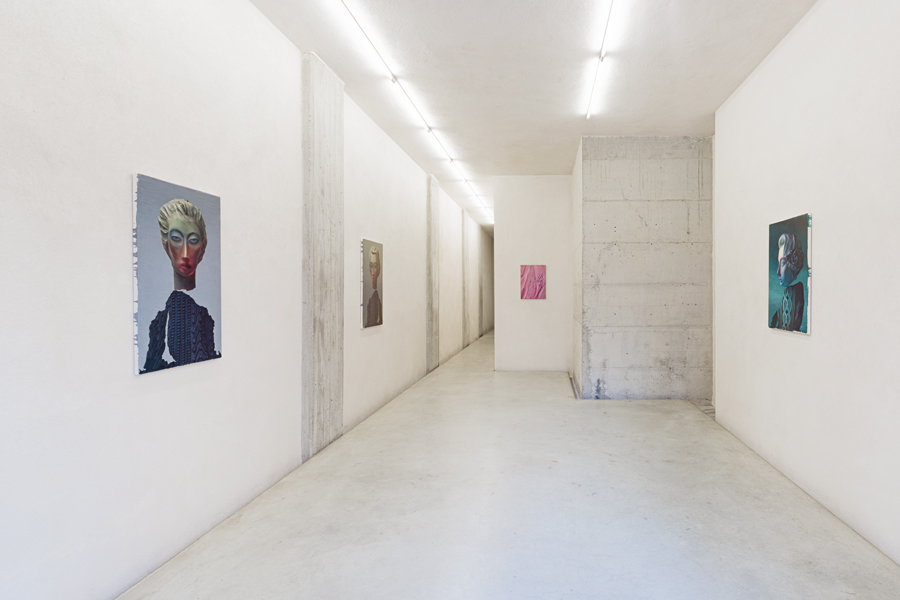
Damien Meade’s painting presents a holistic conception, as it is configured as a concatenation of signs and matter that does not allow for the elements and production phases that characterise it to be classified or defined, in clear and absolute terms. Mobility and negotiation are at the core of his practice and underlie the process he carries out: the modelling of a clay sculpture created by the artist in his studio, is followed by a phase of photographic shots made from different perspectives, after which the sculpture is modified and photographed again. At the end, once the artist is satisfied, some photographs will become visual sources for his paintings. Far from being purely procedural steps for their own sake, they represent a fundamental part of his workflow and pervade it to its most essential dimension, deeply infused with a special sense of fluidity. Each element, each shade of color, and each portrayed shape are rationally composed and connected to the others to create a unique image made of open, permeable, and porous gestures and rites.
Indeterminacy, or rather interchangeability, can be observed everywhere in Meade’s work, starting from the desire to not give a name to his paintings – all untitled – to the operating modes that see him move between different media, and finally to the timelessness that characterizes his images, the final stage of his whole artistic operation. Each brushstroke carries with it a fusion of matter and poetic vision that brings into existence a fiery being. Like clay, the pigment absorbs liquid to be malleable and capable of transforming itself into dialogical, circumstantial forms, but also into enigmas. Indeed, in his paintings we do not observe portrayed subjects, but rather images whose characterising elements, colors and shapes, relate to different eras: pink can create a dialogue with sacred elements, such as Christ’s veil in the Resurrezione [Resurrection](1458-1468) by Piero della Francesca, or it might be the pink of a dildo - which in addition to being a tool for carnal pleasure is also a 'multiple' object and, by extension, a symbol of the global market. Meanwhile, shapes, busts, and faces are the result of the overlap between catwalk haute-couture and historical (not necessarily artistic) artefacts of ingenuity such as iron body armour. In this fluid migration of images that goes beyond the categories of time and space, the diverse sources are the subject of a re-elaboration the artist structures in a dualistic way: on the one hand, there’s a seductive, worldly, and attractive picture, on the other a repugnant, frigid and judgmental one. Two main directions that gathered in the same room generate an uncanny environment. Despite the utter integrity of the surface, the artist’s hands seem to furrow the mass of pink pigment and sink into the paintings – tempting canvases which lead towards a haptic taste for painting – and the trails left convey a desire for the research and appropriation of matter, essentially a symbol of creative activity and pictorial practice itself. The illusory nature of the painted picture is also a negative reading of the human traces of the Cueva de las Manos, datable to between 9000 and 13000 years ago, of which we can only intuit and imagine its original meaning and motivations. However, the figures portrayed in the cold-background paintings can be deciphered as guardians, viewed from slightly different directions, each caught sinking into the silence that surrounds them. The ancient hieratic character – typifying the portrait as a genre – is accentuated by an indeterminate background which cracks through the busts and which makes the faces float in space -interpretable as ruins of histories prophesied by forgotten oracles.
Although these elements could be investigated separately, a magmatic reading prevails, since in Meade’s production every work is the anticipation of the next one and, in other words, every element has within it both the past and future: the canvases are stills of an ongoing journey. By virtue of this linear, elongated contiguity and temporality, his contribution to painting is located with those who keep replying to the eternal debate with apocalyptic and cyclical pronouncements about the death of this medium (as well of art itself) in which, despite still dominating the scene on a global scale, and perhaps precisely in the wake of Marx, painting asserts itself yet as a possibility, but paradoxically posing as an unstoppable and inexorable phantasmagoria of image.
Alessandra Franetovich
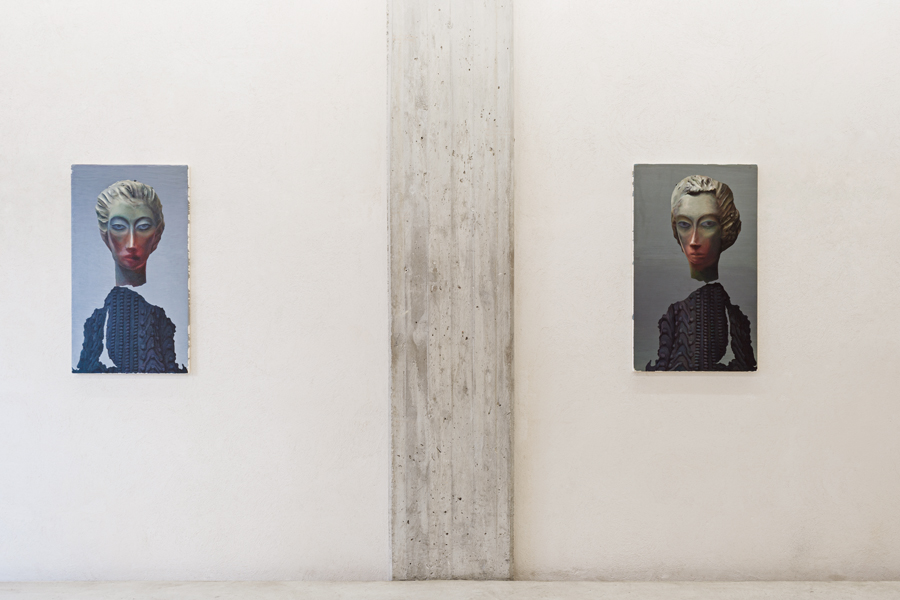
Untitled DM217, 2021 (left)
Untitled DM215, 2021 (right)
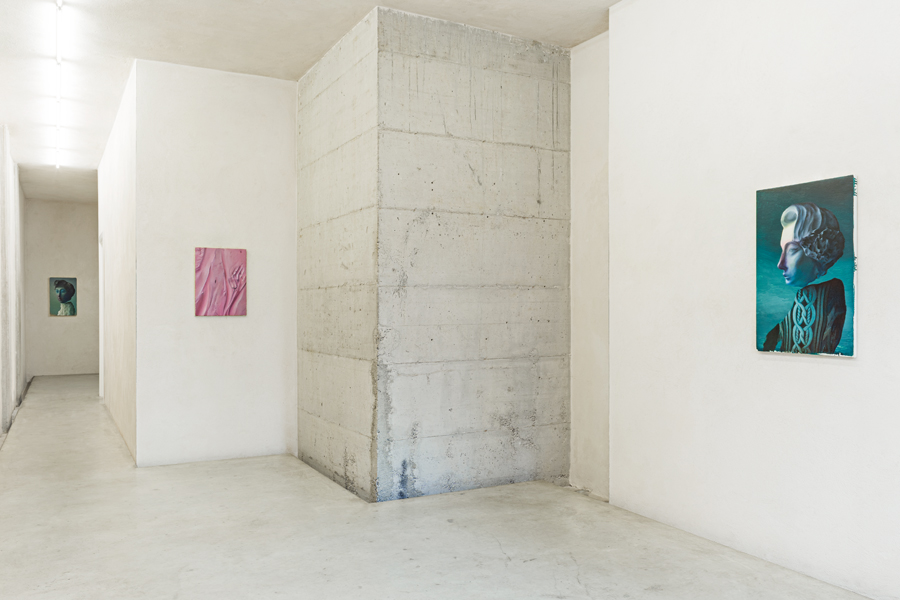

Untitled DM216, 2021
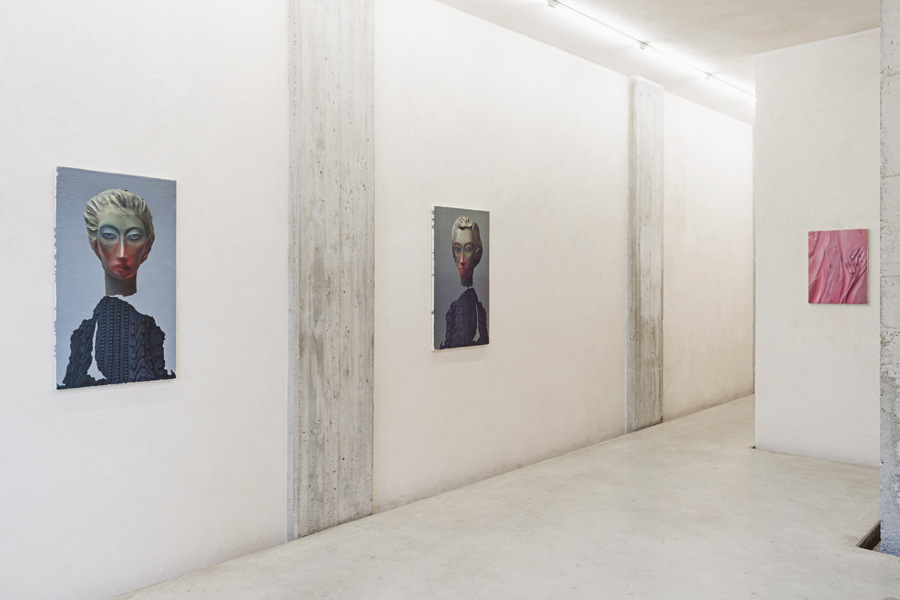
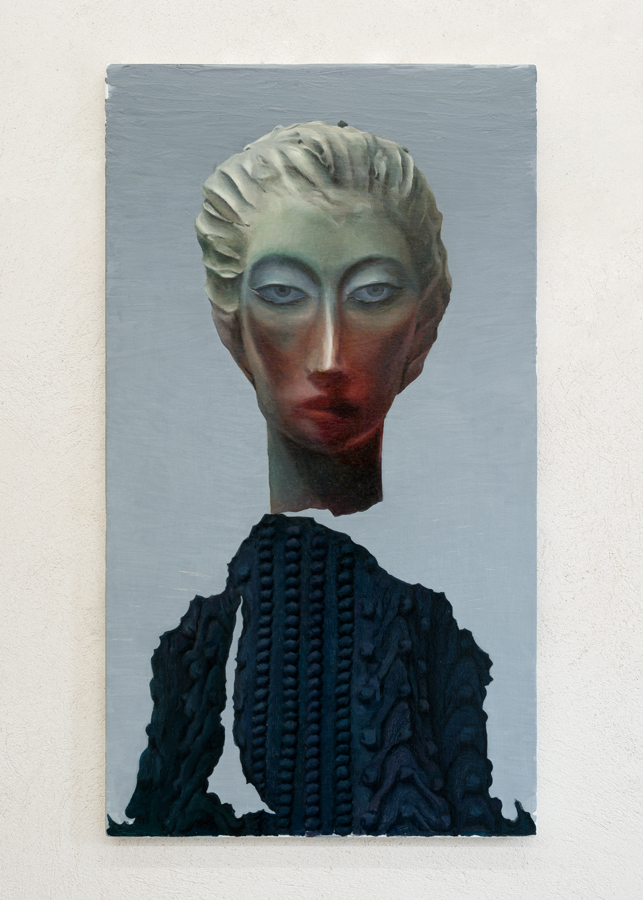
Untitled DM217, 2021, oil on canvas, 93x52 cm
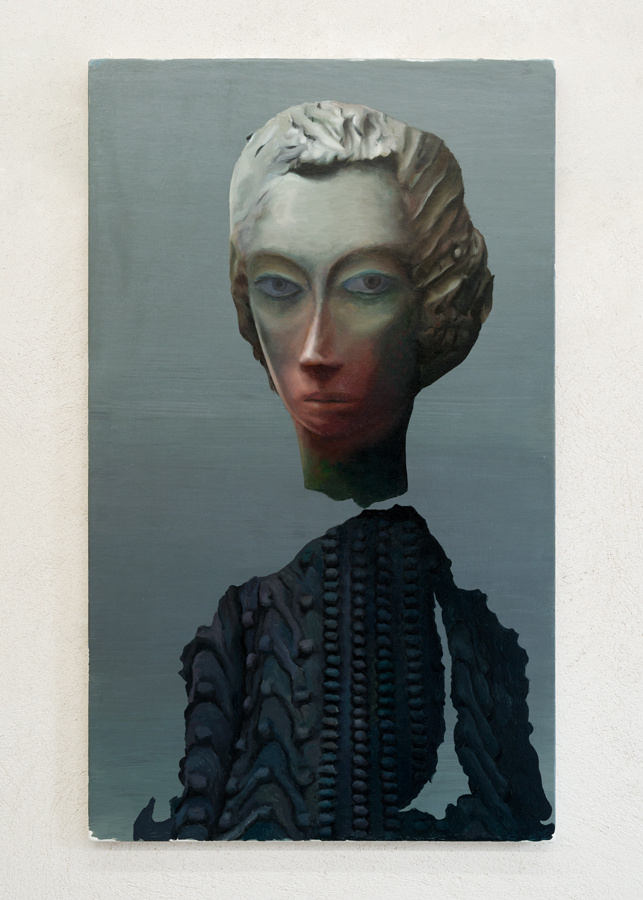
Untitled DM215, 2021, oil on canvas, 93x52 cm
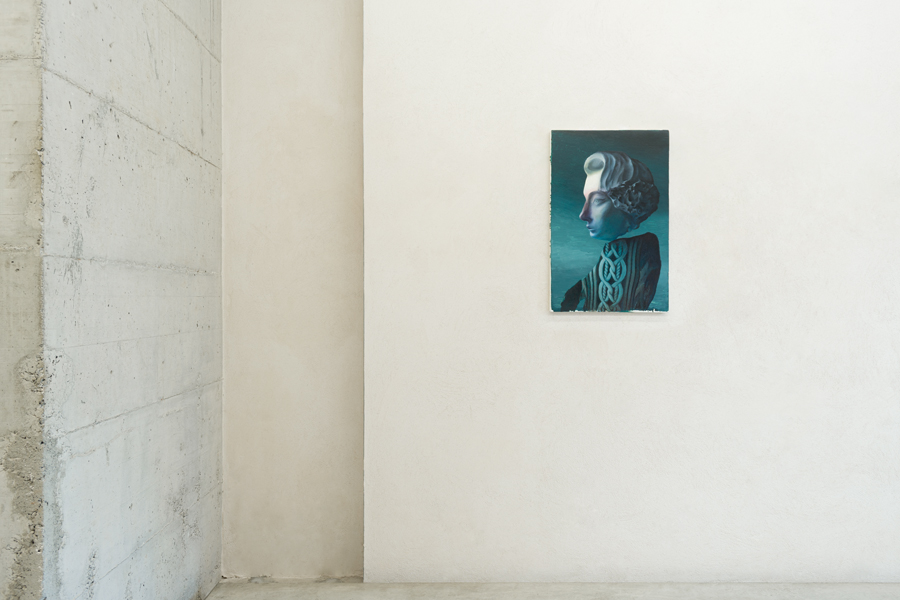
Untitled DM216, 2021
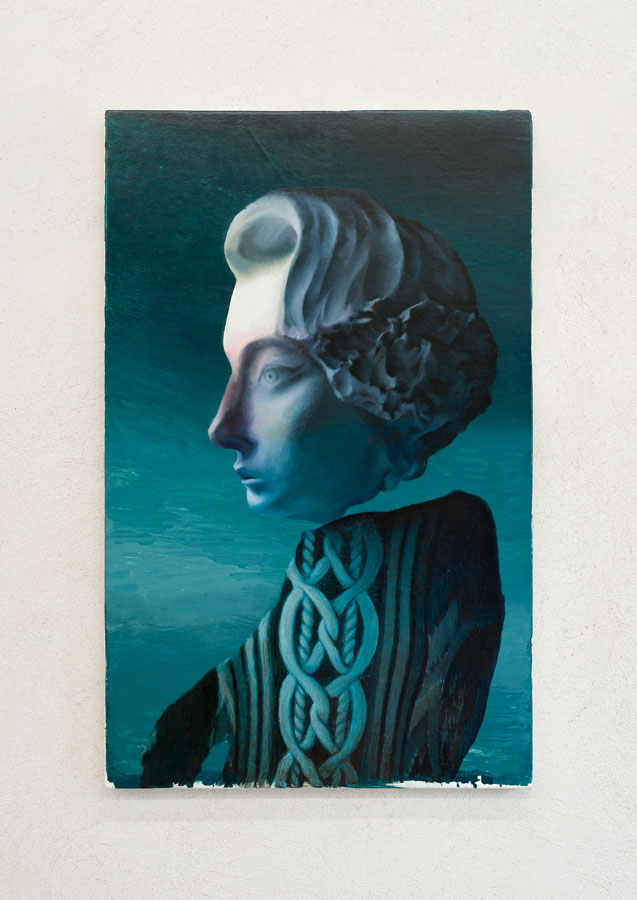
Untitled DM216, 2021, oil on canvas, 80x50.5 cm
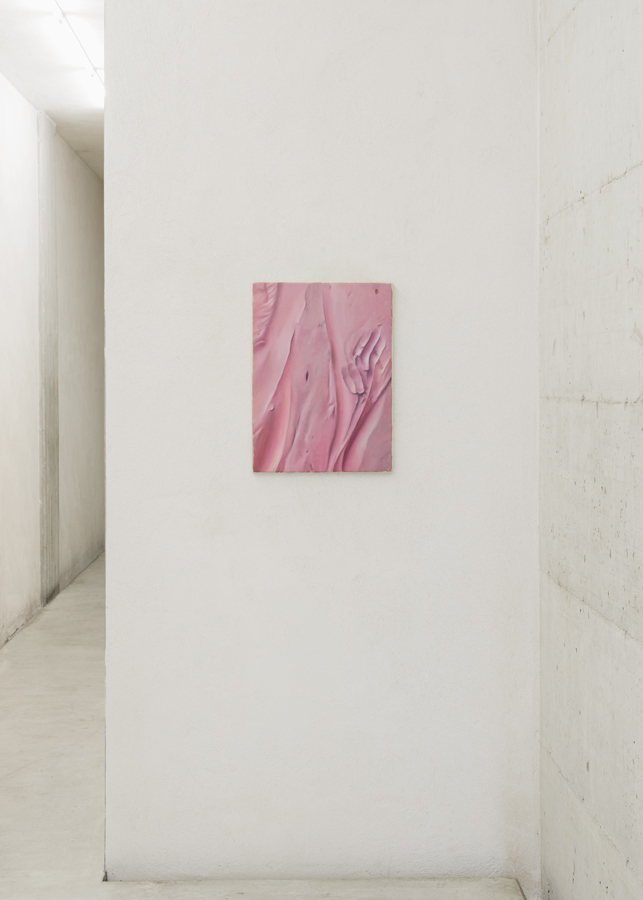
Untitled DM211, 2021
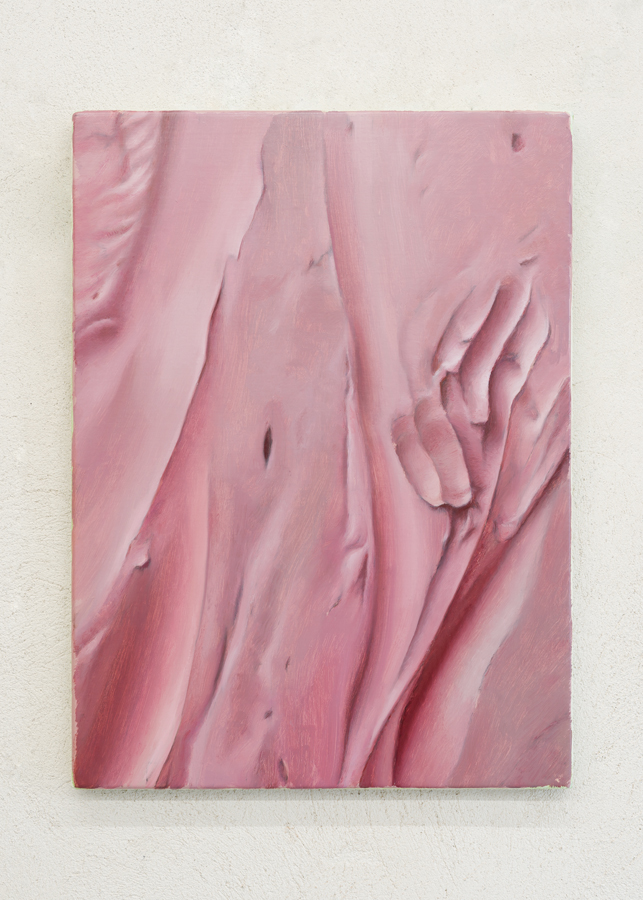
Untitled DM211, 2021, oil on canvas, 55x40.5 cm

Untitled DM214, 2021, oil on canvas, 68.5x43 cm
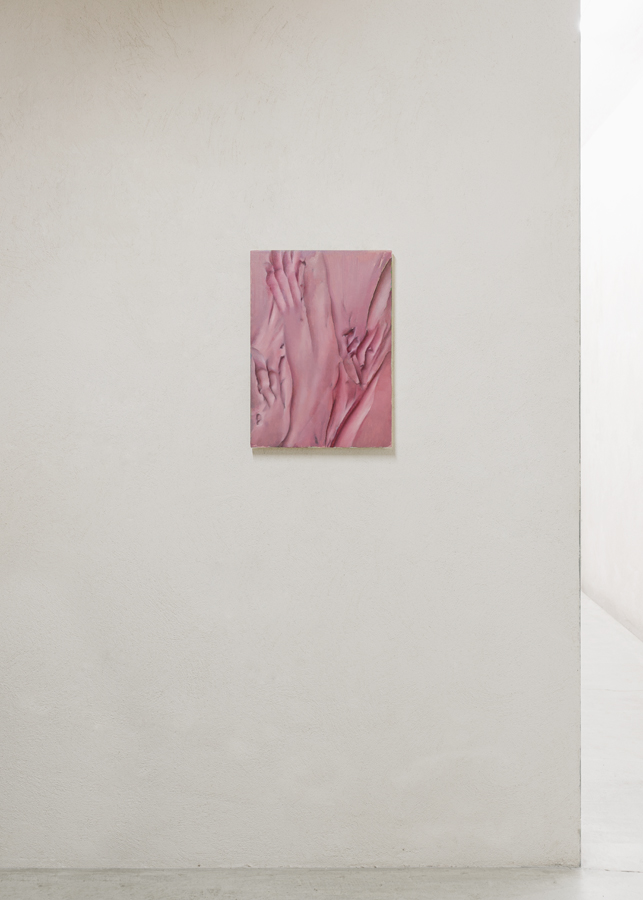
Untitled DM212, 2021
